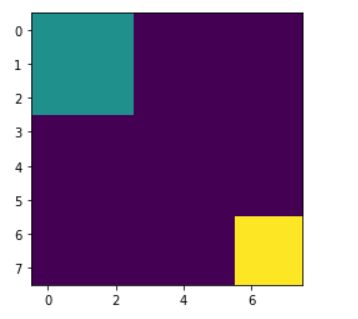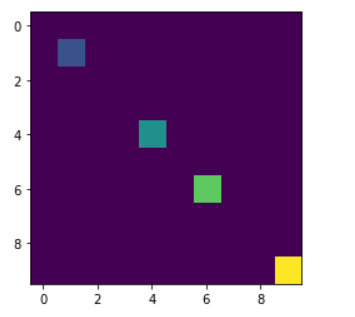En este artículo veremos cómo podemos obtener pesos de región etiquetada en mahotas. Las imágenes etiquetadas son imágenes enteras donde los valores corresponden a diferentes regiones. Es decir, la región 1 son todos los píxeles que tienen valor 1, la región dos son los píxeles con valor 2, y así sucesivamente. Por convención, la región 0 es el fondo y, a menudo, se maneja de manera diferente. Podemos crear una región etiquetada con la ayuda del método mahotas.label.
Podemos obtener el tamaño de cada región con la ayuda del método mahotas.label_size, este tamaño se mide simplemente como el número de píxeles en cada región. En cambio, podemos medir el peso total en cada área.
Para hacer esto usaremos el método mahotas.label_size
Sintaxis: mahotas.labeled_sum(array, región_etiquetada)
Argumento: toma dos objetos numpy.ndarray como argumento, es decir, una array aleatoria de forma de región y región etiquetada
Retorno: devuelve una lista de valores numpy.float64
Ejemplo 1:
Python3
# importing required libraries
import mahotas as mh
import numpy as np
from pylab import imshow, show
# creating region
# numpy.ndarray
regions = np.zeros((10, 10), bool)
# setting 1 value to the region
regions[:3, :3] = 1
regions[6:, 6:] = 1
# getting labeled function
labeled, nr_objects = mh.label(regions)
# showing the image with interpolation = 'nearest'
imshow(labeled, interpolation ='nearest')
show()
# random array of region shapes
array = np.random.random_sample(regions.shape)
# getting sum i.e area
sums = mh.labeled_sum(array, labeled)
# printing the sums values
for i in range(len(sums)):
print("Sum of region " + str(i) + " : " + str(sums[i]))
Producción :

Sum of region 0 : 38.81707025816505 Sum of region 1 : 5.627375253802732 Sum of region 2 : 8.224633573583985
Ejemplo 2:
Python3
# importing required libraries
import mahotas as mh
import numpy as np
from pylab import imshow, show
# creating region
# numpy.ndarray
regions = np.zeros((10, 10), bool)
# setting 1 value in the region
regions[1, 1] = 1
regions[6, 6] = 1
regions[4, 4] = 1
regions[9, 9] = 1
# getting labeled function
labeled, nr_objects = mh.label(regions)
# showing the image with interpolation = 'nearest'
imshow(labeled, interpolation ='nearest')
show()
# random array of region shapes
array = np.random.random_sample(regions.shape)
# getting sum i.e area
sums = mh.labeled_sum(array, labeled)
# printing the sums values
for i in range(len(sums)):
print("Sum of region " + str(i) + " : " + str(sums[i]))
Producción :
Sum of region 0 : 47.05475409838963 Sum of region 1 : 0.07129110100184632 Sum of region 2 : 0.9333006775043519 Sum of region 3 : 0.8322767370999588 Sum of region 4 : 0.1700224211466459

Publicación traducida automáticamente
Artículo escrito por rakshitarora y traducido por Barcelona Geeks. The original can be accessed here. Licence: CCBY-SA